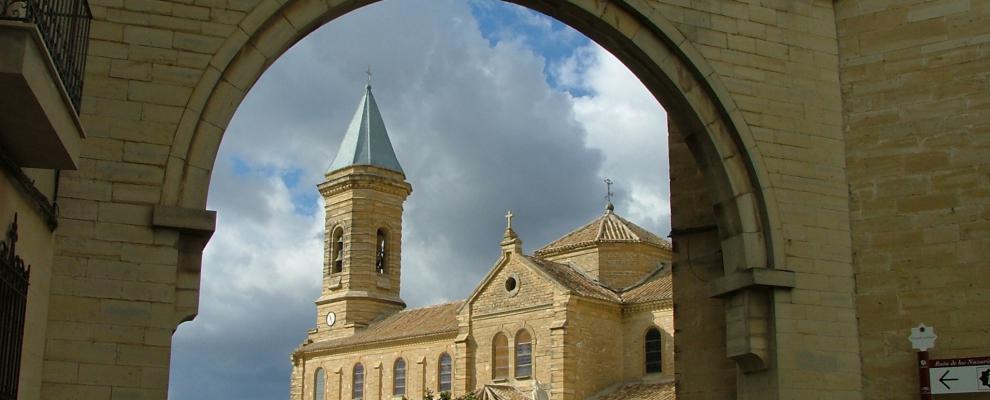This municipality is part of:

Porcuna
Porcuna is situated in the southwest of the district of Campiña, bordering the province of Córdoba.
Information
Tourist area Sierra Sur y Campiña de Jaén
Distance to the capital (km) 42
Altitude above sea level (m) 427
Extensión (Km2): 174,5
No. of Inhabitants 7.055
Demonym Porcunenses
Postal Code 23790
The main transport links to the town are the A-306, which connects to the A-4 at El Carpio and the A-316 at Torredonjimeno, and the A-305 which connected to the A-4 motorway at Andújar and the N-432 at Baena. The A-6175 also connects straight to the A-4 in the north. The town is just 42 km from the city of Jaén.
The township is 174.5 km2 in size, and its natural landscape is made up of undulating ridges and sandstone hilltops. The town centre is at an altitude of 475 m.
The entire municipal area is farmed, and the dominant crop is olive trees. As a result, the local economy depends almost entirely on olives and olive products.
The remaining land is dedicated to crops of wheat, legumes and sunflowers. Other important businesses in the town are carpentry, polyester manufacture, the ironworking and the quarrying of stone. After five millennia, it is still a city of stone. From the main quarries leave pieces of the town’s very soul in the form of blocks, doorways, floor tiles, chimneys and sculptures amongst other artisan pieces.
The town is considered to have some of the best archaeological sites, including a Tartessian necropolis dating from the 7th century B.C. at a site known as Cerrillo Blanco.
Other highlights of the area’s rich artistic heritage include the remains of the Castle of the Order of Calatrava, the Torre Nueva (or Tower ...
The main transport links to the town are the A-306, which connects to the A-4 at El Carpio and the A-316 at Torredonjimeno, and the A-305 which connected to the A-4 motorway at Andújar and the N-432 at Baena. The A-6175 also connects straight to the A-4 in the north. The town is just 42 km from the city of Jaén.
The township is 174.5 km2 in size, and its natural landscape is made up of undulating ridges and sandstone hilltops. The town centre is at an altitude of 475 m.
The entire municipal area is farmed, and the dominant crop is olive trees. As a result, the local economy depends almost entirely on olives and olive products.
The remaining land is dedicated to crops of wheat, legumes and sunflowers. Other important businesses in the town are carpentry, polyester manufacture, the ironworking and the quarrying of stone. After five millennia, it is still a city of stone. From the main quarries leave pieces of the town’s very soul in the form of blocks, doorways, floor tiles, chimneys and sculptures amongst other artisan pieces.
The town is considered to have some of the best archaeological sites, including a Tartessian necropolis dating from the 7th century B.C. at a site known as Cerrillo Blanco.
Other highlights of the area’s rich artistic heritage include the remains of the Castle of the Order of Calatrava, the Torre Nueva (or Tower ...
The main transport links to the town are the A-306, which connects to the A-4 at El Carpio and the A-316 at Torredonjimeno, and the A-305 which connected to the A-4 motorway at Andújar and the N-432 at Baena. The A-6175 also connects straight to the A-4 in the north. The town is just 42 km from the city of Jaén.
The township is 174.5 km2 in size, and its natural landscape is made up of undulating ridges and sandstone hilltops. The town centre is at an altitude of 475 m.
The entire municipal area is farmed, and the dominant crop is olive trees. As a result, the local economy depends almost entirely on olives and olive products.
The remaining land is dedicated to crops of wheat, legumes and sunflowers. Other important businesses in the town are carpentry, polyester manufacture, the ironworking and the quarrying of stone. After five millennia, it is still a city of stone. From the main quarries leave pieces of the town’s very soul in the form of blocks, doorways, floor tiles, chimneys and sculptures amongst other artisan pieces.
The town is considered to have some of the best archaeological sites, including a Tartessian necropolis dating from the 7th century B.C. at a site known as Cerrillo Blanco.
Other highlights of the area’s rich artistic heritage include the remains of the Castle of the Order of Calatrava, the Torre Nueva (or Tower of Boabdil), the Romantic-era church and Calatravan priory of San Benito (Saint Benedict), the Iglesia Parroquial de Nuestra Señora de la Asunción (Parochial Church of Our Lady of the Assumption) and the Roman ruins of Obolco/Ibolca.
Porcuna is a city of cities: la Iberian Ipolca, the Roman Obulco and the Roman Bulkuna. As a result, the city of great historical importance from both a political and military point of view. It served as a general barracks for the army of Julius Cesar at the Battle of Munda and then as a prison for King Boabdil, who was captured in the Battle of Lucena in 1483.
Source of information
Imágenes
Contenido Audiovisual
Destinations
Culture
Festivities
Nature
Destinos
Culture
Festivities
Nature
Plan your trip
Plan your trip
Discover EXPERIENCES
SCHEDULE Events
-
Albergue Complejo Las Palmeras
-
Alojamiento cine teatro
-
Arco de lo la Plaza
-
Ayuntamiento Porcuna
-
Centro de Visitantes de la Necrópolis Tumular de Cerrillo Blanco
-
Ermita de Nuestro Padre Jesús Nazareno
-
Ermita de San Benito
-
Francisco Aguilera
-
Fuente del Comendador
-
Hostal Ana Pilar
-
Llano de Alharilla
-
Museo de Porcuna
-
Dynastic Necropolis of Cerrillo Blanco
-
Porcuna Municipal Tourism Office
-
Parque Arquelógico de Cerrillo Blanco
-
Porcuna
-
Que vienen los íberos
-
Restaurante El Triunfo
-
Villa Alicia
-
Villa Amparo







